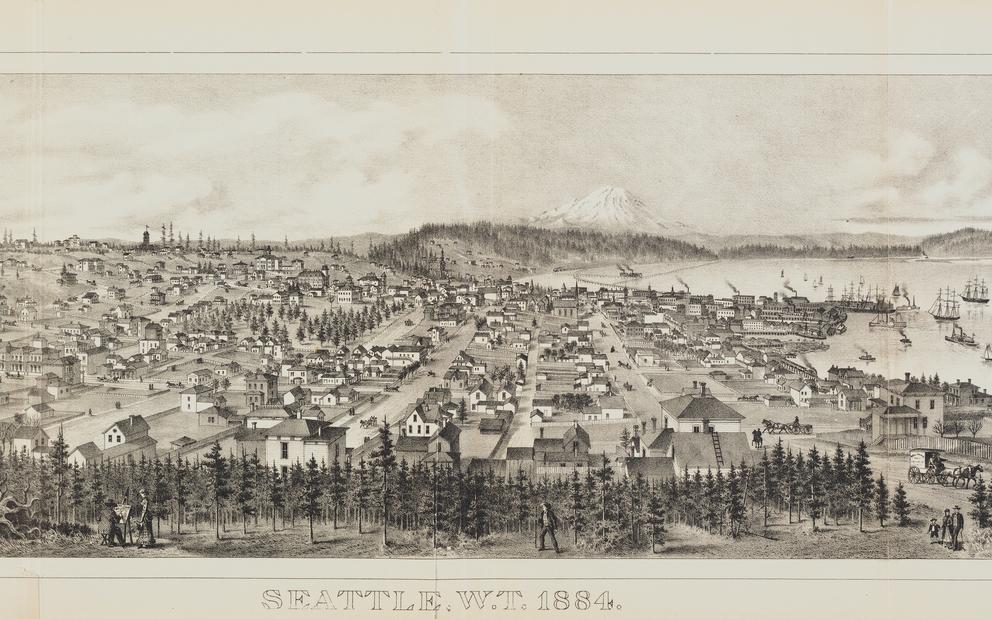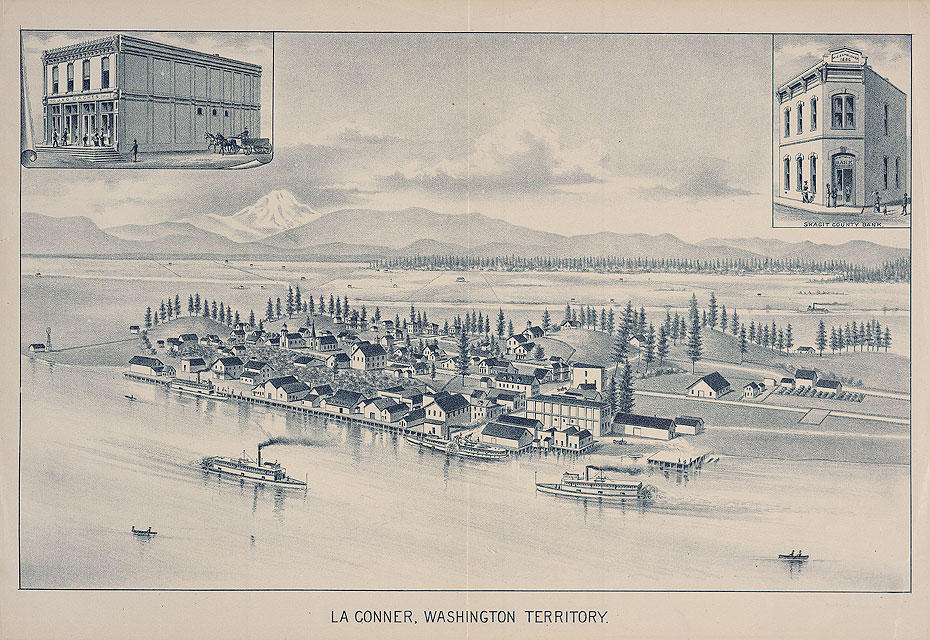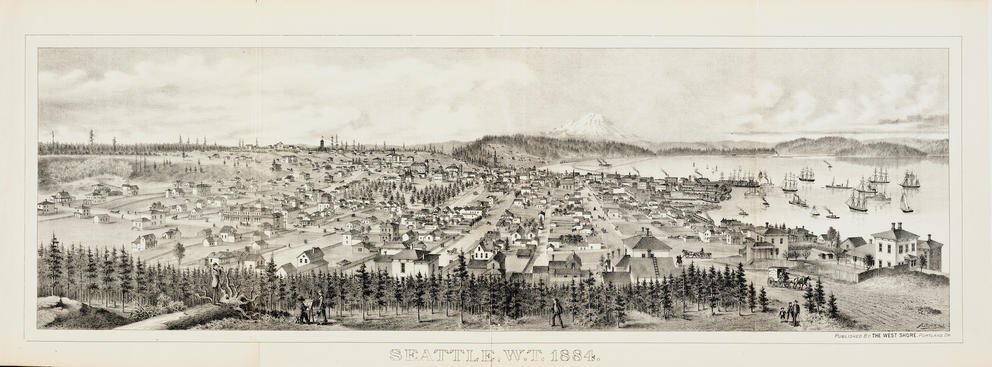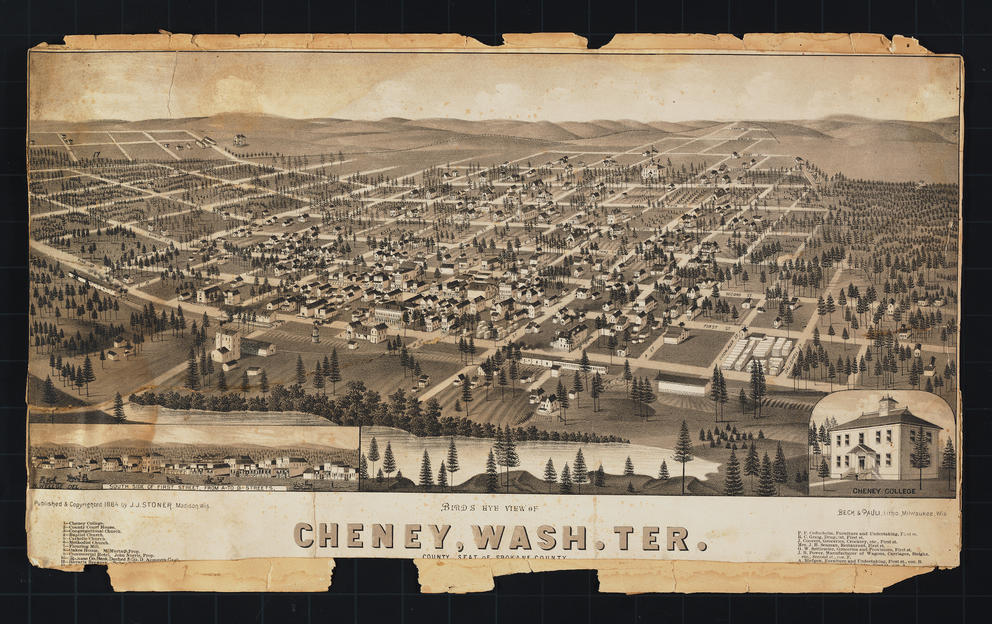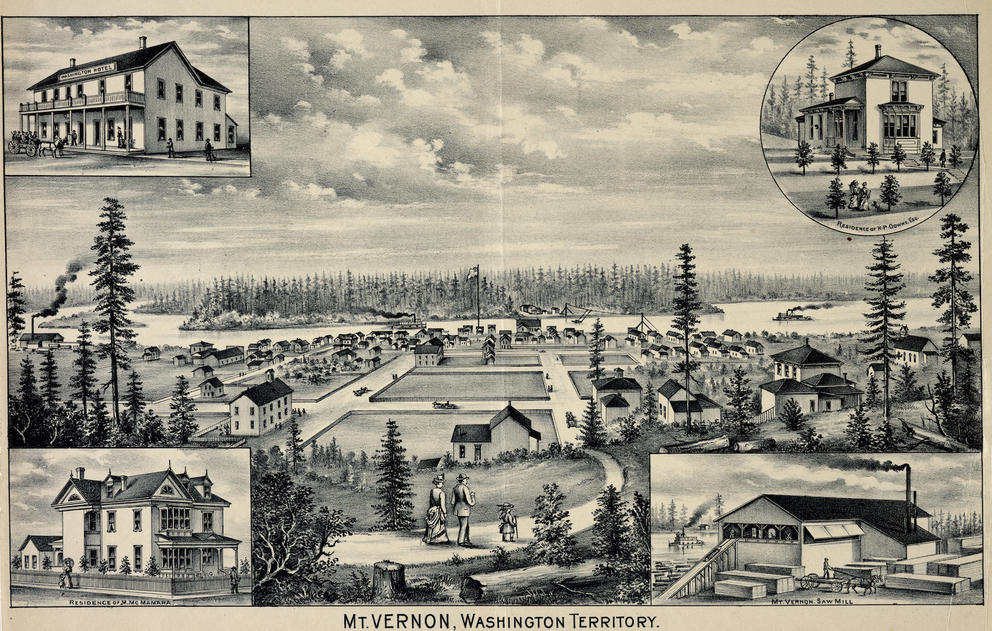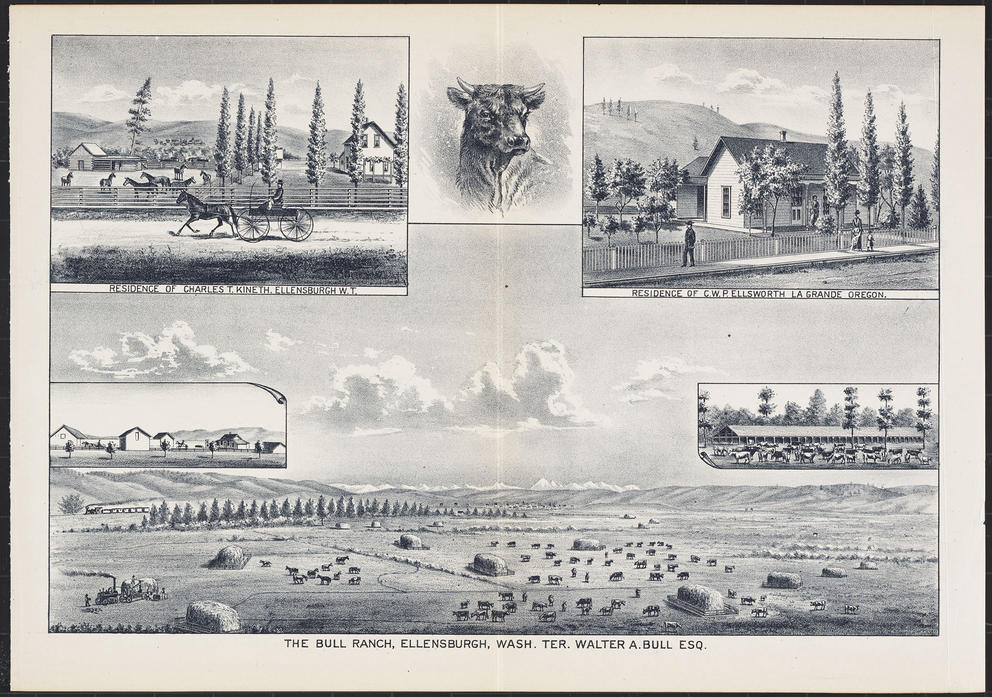The desire to see what we look like from up in the sky has been around much longer than the space race. The first aerial photograph was taken from a hot-air balloon in 1858 but — much as most of us will never make it to space — not everyone in the 19th century had access to cameras and hot-air balloons.
Enter “bird’s-eye” or “panoramic” maps: elaborate drawings from the late 1800s that depict landscapes viewed at an angle, as though from great heights. Decades before airplanes were invented, these aerial perspectives animated the public’s imagination with a sense of wonder and potential to inspire.
A View from Above, now on display at the Washington State History Museum (through Jan 23, 2022), showcases 35 original panoramic maps depicting cities and towns across Washington state. Also in the mix: a selection of mapmaking, surveying and lithography artifacts from the Washington State Historical Society’s vault. As a whole, the collection graphically depicts the vibrant life of early Pacific Northwest settlements and provides a glimpse into the viewpoints of the day.
These maps were typically motivated by civic pride and the desire to encourage commercial growth. With an emphasis on exaggerated storytelling and embellishments, they were drawn from a combination of surveyor measurements, sketched notes and wild imagination — often disregarding cartographic norms for accuracy and consistent scale.
For those who could not read or for whom English was not a first language, the maps communicated in a universal language of images, providing a unifying and patriotic sense of place.
Thousands of the maps were mass produced (via lithography) alongside the development of railroads across the U.S. Chambers of commerce and other civic organizations commissioned the largely fanciful drawings as advertisements for a city’s commercial and residential potential. These illustrated landscapes could simultaneously portray historical events, local products and specific people.
“One of the maps on exhibit has an illustrated figure that we believe may have been the artist himself,” notes lead curator Gwen Whiting.
Philosopher William Durant (The Story of Civilization, 1935) believed pictorial maps like these show us “the face of history,” literally revealing points of view and perspectives through which people think about a location, providing viewers access to specific cultural attitudes about the world and their place in it.
In other words, the maps can be studied for clues beyond geography.
Take, for example, an 1884 bird’s-eye map of Seattle, which has the viewer hovering above Denny Hill (later razed by the regrade). The view is southward over Elliott Bay; in the distance Mount Rainier rises above the old tide flats, where one can make out a train approaching. It was featured in the June, 1884, issue of The West Shore, a Portland magazine boasting itself “the only illustrated publication on the Pacific Coast, and the only one in the world making a specialty of giving original illustrations of the grand scenery of this region.”
In the foreground of the map are illustrated scenes of leisure: a woman watching a man painting at an easel en plein air and a family headed out on a forest walk. These clues reveal an underlying truth: Women often had to be persuaded to relocate to frontier Seattle.
Even with the first transatlantic railroad completed in 1869 and the Northern Pacific Railway connecting to the Pacific Northwest by 1888, at one point, only one out of 10 adults in the city were women — and most over the age of 15 were already engaged. When promoting Seattle, it was important to show the city as a place for families, not just a mill town.
Sometimes, panoramic mapmakers employed artistic exaggeration that bordered on the fraudulent, luring travelers with images of idyllic towns and buzzing industry, only to have newcomers arrive to find mud-soaked shacks instead.
That same 1884 Seattle map presents a conveniently flat downtown with neatly graded streets, sidewalks lined with handsome Victorian homes, the steeples of at least two churches and what appear to be several multistory institutional buildings that might be schools or even a hospital. The bay is bustling with ships, smokestacks dot the harbor mills and horse-drawn carriages fill the streets. Notably, Mount Rainier is entirely visible, and no rainclouds mar the sky. Five years after this idyllic map was created, Seattle’s largely wood-built downtown core would burn to the ground.
Some of the mapmakers were better known than others for their attention to minute details. One was German immigrant Edward Lange, who made several bird’s-eye maps of the region (notably of Olympia and Tumwater) and took great pride in his exacting illustrations of the specific ships and products of the ports he brought to life.
“There were many different artists who created maps of Washington state,” Whiting says, “but since the maps were commissioned, not all of them were signed.”
Another example of remarkable detail is a map of Cheney in Spokane County, created one year after the town was incorporated in 1883. It includes illustrated insets to provide viewers a closer look at Cheney College (now Eastern Washington University) and the market center. Street names are carefully labeled, and a legend proudly lists infrastructure, including a hotel, bank, restaurants, groceries and furniture stores.
An 1889 map of Mount Vernon in Skagit Valley also makes use of insets to highlight areas of pride: a modern hotel, a sawmill spewing thick smoke and the fine homes of esteemed town leaders. The same year this map was produced, a committee was appointed to negotiate extending the Great Northern Railway to Mount Vernon, establishing it as an important commercial center.
At least half of the thousands of panoramic maps created in the U.S. in the late 1800s were of cities and towns in the Northeast. Very few were made of the deep South, where the focal point of life was the farm or plantation rather than the village or town. And in the Pacific Northwest, these artworks were synonymous with visions for the future, serving as harbingers of what pioneers hoped to manifest.
No other graphic form of this era so effectively captures the early aspirations of America’s urban centers. Up until these (sometimes wildly) creative renderings, panoramic vistas had been achievable only by standing on a hilltop. Providing a view from higher up enabled these artists to expand and shape how residents and outsiders could think about certain places.
With the invention of the airplane in the 1930s, photography would gradually supplant panoramic mapmaking, changing our perspective of where we live — and who we are — yet again.
Get the latest in local arts and culture
This weekly newsletter brings arts news and cultural events straight to your inbox.

